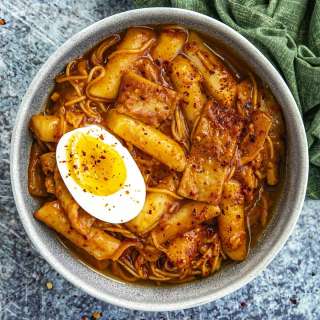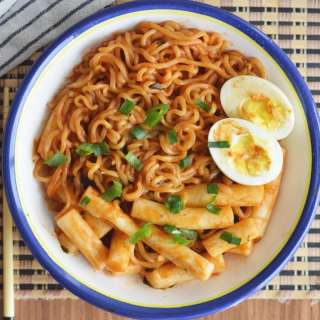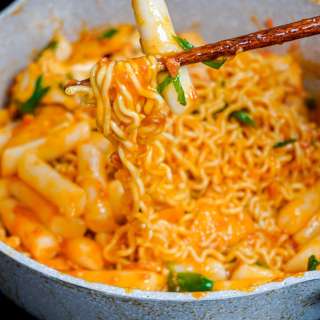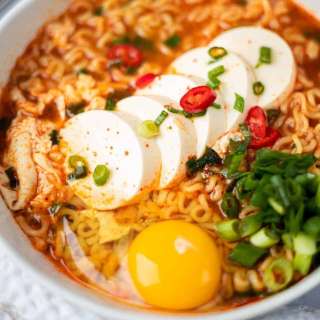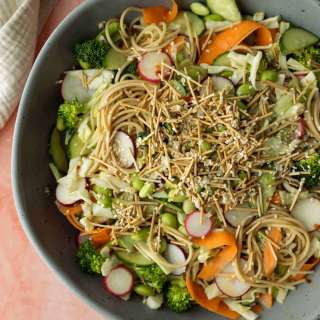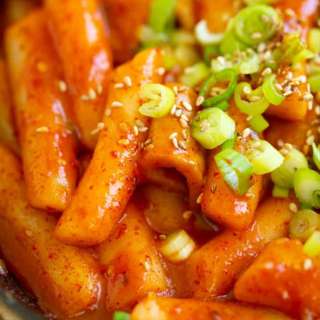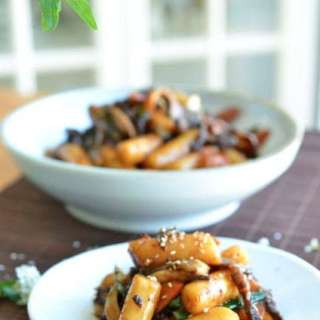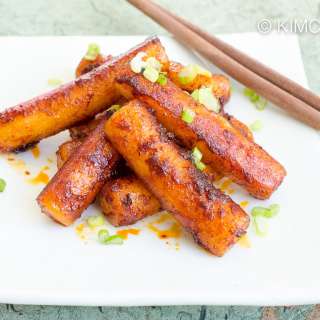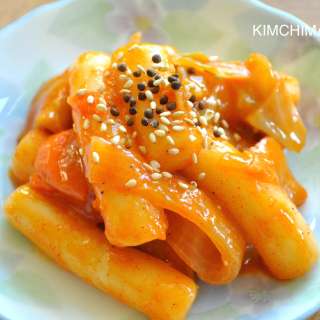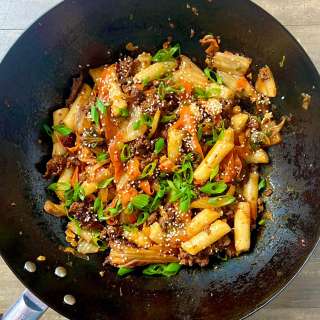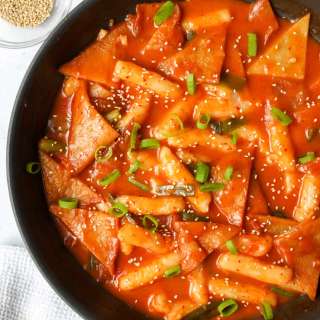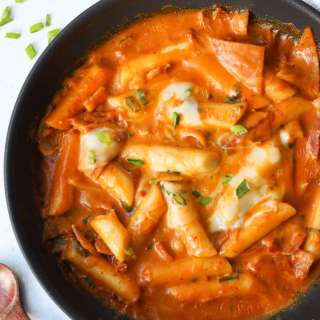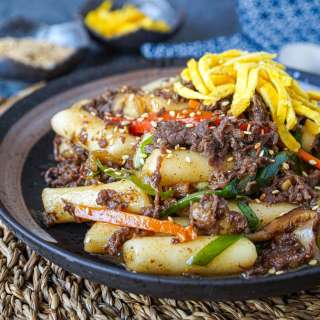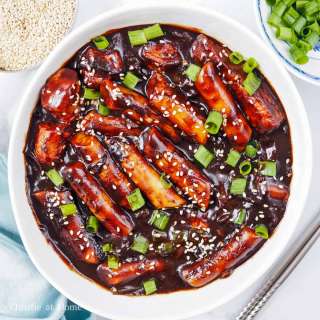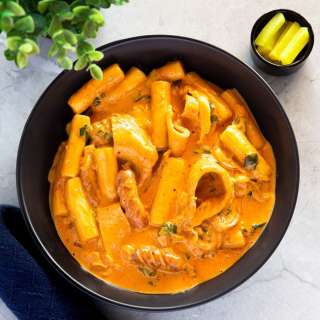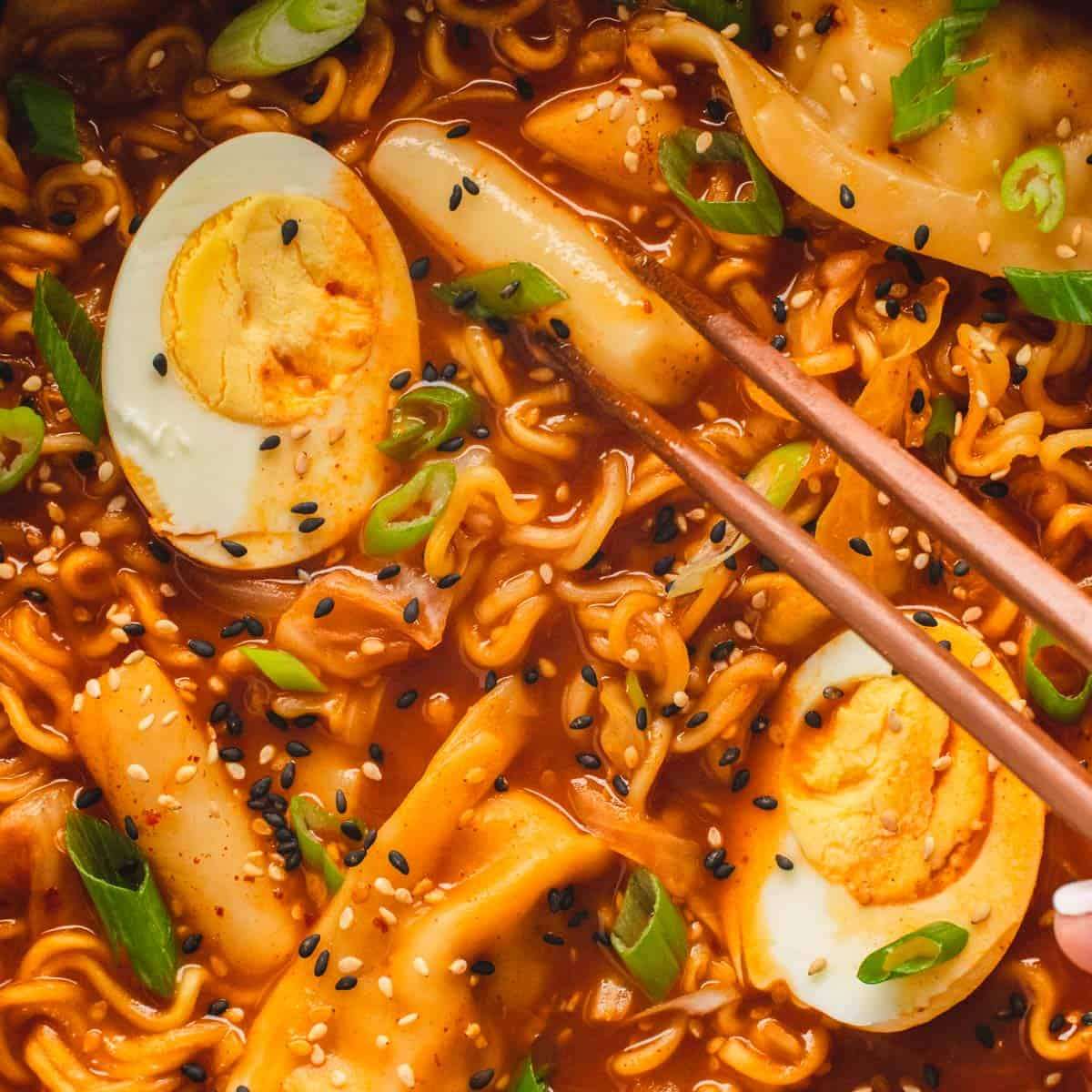
Rabokki | Tteokbokki Ramen
User Reviews
5.0
-
Prep Time
5 mins
-
Cook Time
5 mins
-
Total Time
15 mins
-
Servings
2 servings
-
Calories
398 kcal
-
Course
Side Dish, Main Course

Rabokki | Tteokbokki Ramen
Rabokki is a popular Korean dish filled with delicious and exciting surprises in every bite! Chewy rice cakes, plump dumplings, bouncy ramen noodles, and tender veggies all swimming in a sweet and spicy sauce. There's just SO much goodness to enjoy!
Ingredients
Sauce
- 3 tablespoons Gochujang Korean chili paste
- 3 tablespoons low-sodium soy sauce
- 2 teaspoons sugar
- 1 teaspoon Gochugaru Korean chili flakes
- 2 teaspoons ramen packet seasoning optional
Ingredients
- 4 cups anchovy or dashi stock*
- 1/2 medium onion finely diced
- 3/4 cup cabbage shredded
- 14 rice cakes soaked in warm water for 20 minutes then drained
- 4 Frozen dumplings
- 1 pack instant ramen noodles
- 2 boiled eggs cut in half
- 1/2 tablespoon sesame seeds toasted white and/or black
- 2 green onions thinly sliced
Instructions
- In a small bowl, combine the sauce ingredients. Set aside.
- Pour the anchovy or stock into a large pot on medium-high heat, then pour in the sauce. Stir until the sugar is dissolved then bring broth to a boil.
- Add in onions, cabbage, rice cakes, dumplings, cabbage, and instant ramen. Bring broth to a boil again and cook for about 7 minutes, or until the dumplings are cooked through and the noodles and rice cakes are chewy. The sauce should also have thickened too.
- Alternative Serving: If you’re cooking your Rabokki at the table, top the ingredients with eggs, sesame seeds, and green onions, then start eating as the ingredients finish cooking. is brought to a boil, reduce the heat to medium-low and beg
- Finish with boiled eggs, sesame seeds, and green. Stir then turn off the heat. Serve immediately & enjoy!
Notes
- Best Pan Choice: I like using a large shallow pan with tall walls to help the broth thicken up more quickly. Then, I’ll bring the whole pan over to the table to pick from or, I’ll use my portable burner and we’ll all just eat directly from the pan as things finish cooking!
- Best Pan Choice:
- Getting the Perfect Noodle Texture: Double-check the cooking time of your ramen noodles before adding them in. The rice cakes usually take the longest to cook (about 8-10 minutes) and sometimes the noodles are done way before then. Check the noodle’s packaging to avoid mushy soggy noodles.
- Getting the Perfect Noodle Texture:
- Two Options for Serving & Eating:
- You have a couple of options to enjoy this deliciously comforting dish. The first common way is to cook your Rabokki in a pan, then serving them in bowls as you would any dish.
- Alternatively, if you have a portable stove with gas canisters you can use on your dining table, you can cook and eat your Rabokki at the table! Place all your ingredients in the pan and set the pan’s heat to medium, then reduce down to low once it begins to boil. Enjoy eating the toppings as it cooks with the rest of your meal, adding in more broth, if needed, once the sauce boils down.
- Dashi Stock: Dashi stock can be easily found at local Asian or Japanese markets or on Amazon. I like that it comes in powder form, making it easily accessible for other recipes! Alternatively, you can swap it out for 3 cups low-sodium chicken stock + 1 cup water.
Key Tips:
Best Pan Choice: I like using a large shallow pan with tall walls to help the broth thicken up more quickly. Then, I’ll bring the whole pan over to the table to pick from or, I’ll use my portable burner and we’ll all just eat directly from the pan as things finish cooking!
Getting the Perfect Noodle Texture: Double-check the cooking time of your ramen noodles before adding them in. The rice cakes usually take the longest to cook (about 8-10 minutes) and sometimes the noodles are done way before then. Check the noodle’s packaging to avoid mushy soggy noodles.
- Best Pan Choice: I like using a large shallow pan with tall walls to help the broth thicken up more quickly. Then, I’ll bring the whole pan over to the table to pick from or, I’ll use my portable burner and we’ll all just eat directly from the pan as things finish cooking!
- Getting the Perfect Noodle Texture: Double-check the cooking time of your ramen noodles before adding them in. The rice cakes usually take the longest to cook (about 8-10 minutes) and sometimes the noodles are done way before then. Check the noodle’s packaging to avoid mushy soggy noodles.
Two Options for Serving & Eating:
You have a couple of options to enjoy this deliciously comforting dish. The first common way is to cook your Rabokki in a pan, then serving them in bowls as you would any dish.
Alternatively, if you have a portable stove with gas canisters you can use on your dining table, you can cook and eat your Rabokki at the table! Place all your ingredients in the pan and set the pan’s heat to medium, then reduce down to low once it begins to boil. Enjoy eating the toppings as it cooks with the rest of your meal, adding in more broth, if needed, once the sauce boils down.
- You have a couple of options to enjoy this deliciously comforting dish. The first common way is to cook your Rabokki in a pan, then serving them in bowls as you would any dish.
- Alternatively, if you have a portable stove with gas canisters you can use on your dining table, you can cook and eat your Rabokki at the table! Place all your ingredients in the pan and set the pan’s heat to medium, then reduce down to low once it begins to boil. Enjoy eating the toppings as it cooks with the rest of your meal, adding in more broth, if needed, once the sauce boils down.
Nutrition Information
Show DetailsNutrition Facts
Serving: 2servings
Amount Per Serving
Calories 398 kcal
% Daily Value*
| Serving | 250g | |
| Calories | 398kcal | 20% |
| Carbohydrates | 48g | 16% |
| Protein | 24g | 48% |
| Fat | 13g | 20% |
| Saturated Fat | 3g | 15% |
| Polyunsaturated Fat | 3g | 18% |
| Monounsaturated Fat | 3g | 15% |
| Cholesterol | 188mg | 63% |
| Sodium | 2707mg | 113% |
| Potassium | 844mg | 18% |
| Fiber | 4g | 16% |
| Sugar | 12g | 24% |
| Vitamin A | 770IU | 15% |
| Vitamin C | 22mg | 24% |
| Calcium | 248mg | 25% |
| Iron | 4mg | 22% |
* Percent Daily Values are based on a 2,000 calorie diet.
